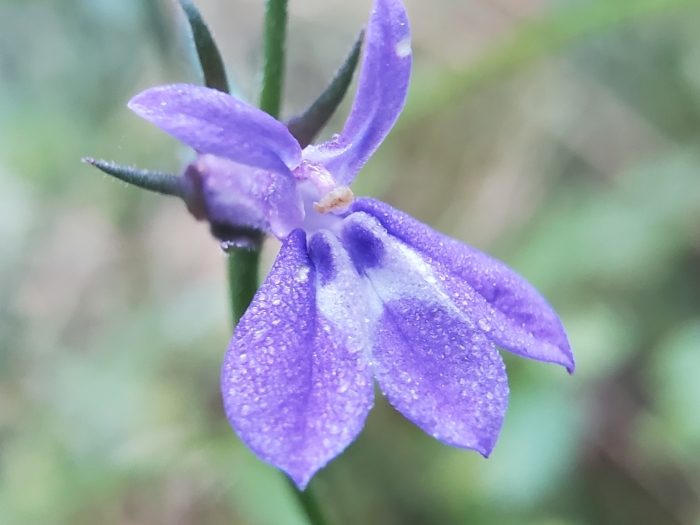Downy Lobelia
(Lobelia puberula)
Downy Lobelia (Lobelia puberula)
/
/

Samuel A. Schmid
CC BY 4.0
Image By:
Samuel A. Schmid
Recorded By:
Copyright:
CC BY 4.0
Copyright Notice:
Photo by: Samuel A. Schmid | License Type: CC BY 4.0 | License URL: http://creativecommons.org/licenses/by/4.0/ | Rights Holder: Samuel A. Schmid | Publisher: iNaturalist | Date Created: 2021-10-18T08:08:59-07:00 |


















































Estimated Native Range
Summary
Lobelia puberula, commonly known as Downy Lobelia, is a deciduous perennial herb native to open woodlands, meadows, and stream banks in the Southeastern United States. It typically grows up to 2.5 feet (1 meter) tall and features lanceolate leaves with a toothed margin. The plant is admired for its showy blue to violet, five-lobed flowers that bloom from July to October, adding a splash of color to the late summer and fall garden.
Downy Lobelia is valued for its ability to attract pollinators such as hummingbirds and butterflies, making it a beneficial addition to wildlife gardens. It is also used in border plantings, wildflower gardens, and as part of naturalized areas. This species thrives in full sun to part shade and prefers consistently moist, well-drained soils. While it is tolerant of a range of soil types, it does best in rich loamy or sandy soils. Downy Lobelia can be propagated by seed or division, and it is relatively low maintenance once established. However, it can be susceptible to root rot if the soil is too wet.CC BY-SA 4.0
Downy Lobelia is valued for its ability to attract pollinators such as hummingbirds and butterflies, making it a beneficial addition to wildlife gardens. It is also used in border plantings, wildflower gardens, and as part of naturalized areas. This species thrives in full sun to part shade and prefers consistently moist, well-drained soils. While it is tolerant of a range of soil types, it does best in rich loamy or sandy soils. Downy Lobelia can be propagated by seed or division, and it is relatively low maintenance once established. However, it can be susceptible to root rot if the soil is too wet.CC BY-SA 4.0
Plant Description
- Plant Type: Herb
- Height: 2-3 feet
- Width: 0.667-1 feet
- Growth Rate: Moderate
- Flower Color: Pink, Purple
- Flowering Season: Summer, Fall
- Leaf Retention: Deciduous
Growth Requirements
- Sun: Full Sun, Part Shade
- Water: High
- Drainage: Slow, Medium
Common Uses
Bee Garden, Bird Garden, Butterfly Garden, Deer Resistant, Hummingbird Garden, Low Maintenance, Showy Flowers
Natural Habitat
Open woodlands, meadows, and stream banks
Other Names
Common Names: Purple Dewdrop
Scientific Names: , Lobelia puberula, Lobelia puberula var. simulans, Lobelia puberula var. mineolana, Lobelia puberula var. obtusifolia, Lobelia glandulosa var. obtusifolia, Lobelia puberula var. puberula, Lobelia puberula f. candida, Lobelia puberula f. puberula, Dortmanna puberula
GBIF Accepted Name: Lobelia puberula Michx.